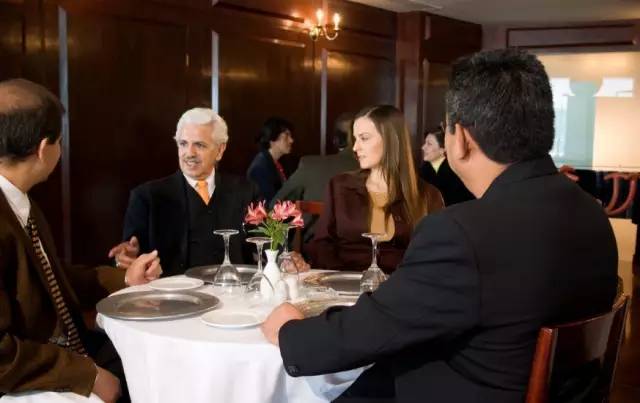Ladies and gentlemen, if you got an invitation to one of the most famous French restaurant in town, and you are looking forward to having a great dinner. But comes the tricky moment when the well-groomed waiter brings you the menu: what shall you order? How many courses, 1, 2, 3 or more? What type of dishes? And how to deal with all these complicated name?
Even for French people ordering at a high-end restaurant can be complicated, there is indeed a couple of rules you should know and a couple of faux-pas you can avoid. Let’s review them altogether.
“I let the host(ess) order for everybody, and we will share”
Here is a major difference between the Chinese culture, where dishes are shared on the table, and the western restaurants where each guest will enjoy his own dishes individually.
Therefore there won’t be a single person ordering for everybody, you will all receive a menu and you are expected to or order what you intend to enjoy by yourself.

“I don’t understand how the menu is structured, let’s choose randomly”
In a French restaurant, there is 2 ways of ordering your dishes:
-The fixed-price menus
-A la carte
The fixed-price menus are like a sort of package already prepared by the restaurant, it will propose 2, 3 or more courses, and for each of them a limited selection of dishes, for a fixed price. The fixed-price menu enables you to try different dishes for a good package price, which is more affordable than ordering the same dishes “à la carte”
Ordering à la carte is simple: you freely order the number of dishes you want amongst the whole offer proposed by the restaurant –excepting the dishes proposed in the menus. Often the most exceptional dishes won’t be in fixed-price menus, but à la carte. They are also separately more expensive.
“I will rather take the most expensive dishes; it’s probably the best choice”
Beware, taking the most expensive dishes is definitely not the safest choice! First, the cost of this course may be explained by the originality of an unusual food that has been imported. If it’s the case I doubt the products will be fresh! Generally expensive courses go with expensive costs for the restaurant to prepare it, which doesn’t give any proof regarding the restaurant savoir-faire in cooking. You better ask them what their speciality is.

“I want to take the most popular dish at the restaurant, how can I know which one it is?”
Honestly, only taking the most popular dish is not a proof of your good-taste. You should rather take what you appreciate. But, on the other hand there is nothing wrong asking for advices.
Here I recommend you not to ask the waiter about the most popular dishes amongst clients but what their specialities are. “What does the chef cook the best? I like light flavourful food, which one would you recommend?” If you mention your preferences the waiter will be happy to guide you accordingly.

“I avoid taking dishes I don’t understand the name of”
Here we reach a customs of high-end restaurants, not only French one.They have a tendency to describe the courses with very poetic names, or with sophisticated explanations. For instance, “garden’s palette and its thousands colours” could describe a salad composed by colourful garden vegetables. Let me comfort you, even French people regularly ask waiters to explain them the meaning of courses’ names. So there is no reason to hesitate!

“Sometimes I won’t take the course I wanted because of 1 undesirable ingredient”
We mentioned it earlier, in western restaurant you eat individually. One of its consequences is that you can also individualise your dish. It is totally acceptable to ask the waiter not to have onions in the course that was supposed to have some, to change the sauce, to change the side dish that normally goes with etc… You know French people can be picky, so it’s acceptable to be(reasonably) picky when ordering at a French restaurant!

“I take the maximum of courses possible to show good face”
There are no particularly strict rules regarding the number of courses you should order. Just common sense. First, if you go to a high-end restaurant it would be truly a pity to simply order a salad or a single course.
Secondly, it is regarded as polite to match the number or courses you take with the number your guest will take. You can simply ask if he or she is in the mood of having an entrée and a main, or a main and dessert, or 3 courses, with café or not etc…At this stage if you are the host or if you simply want to please the other person I advise you to stick to his/her number of courses. Nevertheless it is acceptable to order one course less than him/her, but not one more. Why? In that case your guest would have to wait for you eating your dish, how impolit

“I order wine because I feel I have to”
Even if having one or more bottles of wine at a high-end French restaurant is a highlight, there is here again absolutely no rule imposing it if you don’t appreciate drinking wine. You can ask your guests if they wish to have some, but if not drinking water in a luxurious restaurant is not a faux-pas at all.

I hope with these advices you will now feel at ease next time you have to order at a French restaurant. Now you can share with us in the comments what the unexpected situations you encountered at French restaurants are, we would be happy to help!


